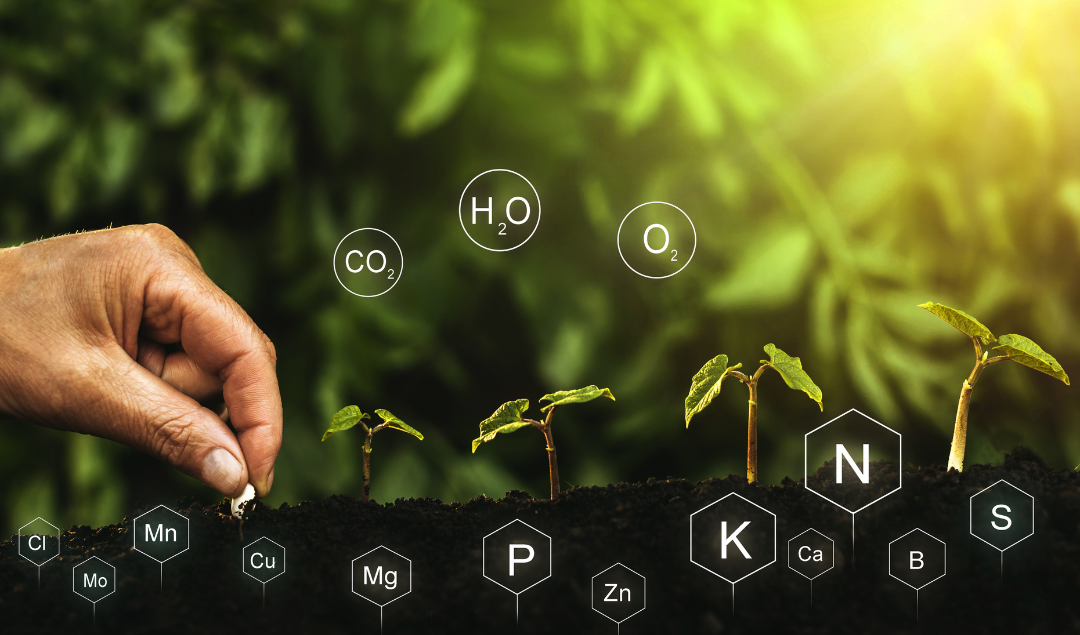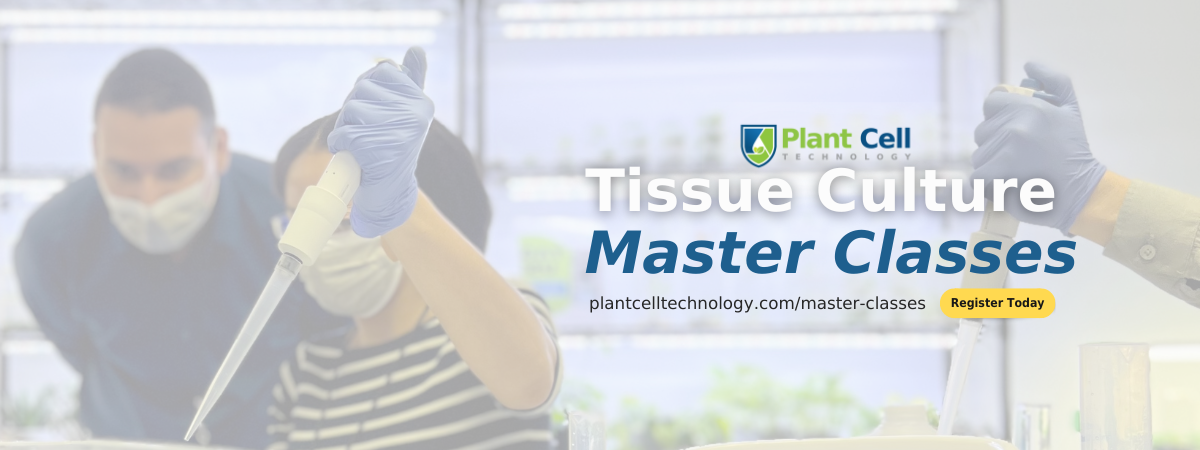
What Are The Nutritional Requirements of Plant Tissue Culture?
As a content and community manager, I leverage my expertise in plant biotechnology, passion for tissue culture, and writing skills to create compelling articles, simplifying intricate scientific concepts, and address your inquiries. As a dedicated science communicator, I strive to spark curiosity and foster a love for science in my audience.


Introduction
You must already know that plants need minerals, nutrients, water, and sunlight for their proper growth and development in the natural environment. Plants extract their nutrients from the soil and with the help of sunlight they make their own food.
However, when plants are grown in the lab environment without soil, they need a supply of nutrients through the media used to grow plants. The composition of the medium is a key factor that determines the success of a plant in the lab environment.
But when we talk about nutrients, what nutrients do plants “exactly” need for their development?
Nutrients by definition are substances that are required by the living for their basic functions.
A typical basal medium is composed of a well-balanced blend of macronutrients and micronutrients, typically including salts like chlorides, nitrates, sulfates, phosphates, and iodides of calcium, magnesium, potassium, sodium, iron, zinc, and boron. Additionally, it includes a carbon source, vitamins, phytohormones, and organic additives.
Though some nutrients are essential, some are optional to add—but when added, boost the growth of plants. Among essential components include inorganic nutrients and organic nutrients, such as carbohydrates, vitamins, and phytohormones. The optional media components include natural extract, activated charcoal, and liquid endosperm.
In this article, we further break down different nutritional components required by plants in lab conditions for their proper growth and development.

Tissue Culture Media
In the lab environment, the tissue culture media is the medium to supply plants with their nutritional requirements. Because the nutrients are supplied through media and the plants have no other source to extract nutrients, it's essential to provide micro and macronutrients that can be sufficient for the plants’ growth and development. Any deficiency of any components may lead to zero to little growth (and eventually may be the death of the plants in the case of constant deficiency).
The two main requirements of plants in the lab environment are:
- The essential nutrients required for the survival of plant cells, tissues, and organs in a cultured environment.
- Favorable physical conditions, such as pH and osmotic pressure.
In the field of plant cell culture, the development of the optimal medium for in vitro cultivation has a long history.
- Early researchers widely employed Knop's (1865) mineral solution.
- Gautherat (1939) later formulated a callus culture medium based on the nutrient solution proposed by Uspenski and Uspenskaia (1925).
- The mineral requirements for plant tissue and organs in culture were systematically studied by Murashige and Skoog (1962).
- Murashige and Skoog’s research was expanded by scientists like Linsmaier and Skoog (1965), Vasil and Hildebrant (1966), and Nitsch and Nitsch (1969), resulting in the development of various media tailored to specific needs.
Nutritional Requirements of the Tissue Culture Plant
Inorganic salts
In plant cell culture, inorganic nutrients refer to those essential for the growth of normal plants. The optimal concentration of each nutrient, crucial for achieving maximum growth rates, varies significantly. The primary elements include nitrogen (N), phosphorus (P), potassium (K), sulfur (S), magnesium (Mg), and calcium (Ca). Additionally, there are microelements such as cobalt (Co), iron (Fe), boron (B), zinc (Zn), molybdenum (Mo), copper (Cu), and iodine (I).
Macroelements
Nitrogen
Among all mineral nutrients, nitrogen (N) plays a crucial role in the growth and differentiation of cultured tissues. The range of inorganic nitrogen can vary from 25 mM to 60 mM based on specific requirements. Typically, nitrogen is supplied in the form of NH4 along with NO3. However, using ammonium ion as a nitrogen source is generally unsuitable, likely due to the potential for the medium's pH to drop below 5 during culture, leading to reduced nitrogen availability. Cells can be cultivated with NH4 as the sole nitrogen source when the medium is supplemented with organic acids like malate, succinate, citrate, or fumerate. Additionally, it is advisable to keep the concentration of NH4-N below 8 mM. While NO3-N can be used as the sole nitrogen source, there is often a beneficial effect if the medium contains NH4-N.
Phosphorus
Phosphorus is typically provided in the form of phosphates and serves as the primary buffering component in tissue culture media. Elevated phosphorus levels exceeding 2mM can frequently hinder tissue growth.
Potassium
The ideal concentration of potassium required is 20 mM. In the presence of low nitrogen concentration, potassium enhances the formation of somatic embryos. A medium supplemented with potassium nitrate generates more embryos compared to a medium with ammonium nitrate.

Sulphur
Sulfur is administered in the form of sulfates. Additionally, sulfur-containing amino acids like L-cysteine, L-methionine, and glutathione serve as satisfactory sources for sulfur.
Calcium and Magnesium
The optimal concentration of required calcium is 3mM. Antagonism between calcium and magnesium has been demonstrated, indicating that an increase in the concentration of one element raises the requirement for the other.
Microelements
Microelements, including Fe, Mn, B, Zn, Mo, Cu, I, and Co, significantly impact tissue growth in vitro. The availability of iron is reduced at high pH due to precipitation. To mitigate this, iron is supplied as a chelated EDTA complex. These elements can have a toxic effect when applied at higher levels. Optimal tissue growth can be achieved by reducing the concentration of microelements to 10 percent of the original level.
Figure: A flow chart on the main components of plant tissue culture medium.
Organic nutrients
Carbohydrates
Carbohydrates are used as carbon sources. Carbon is typically derived from sucrose at a concentration of 2-5%. Monosaccharides like glucose or fructose can also be used as carbon sources but are generally less suitable. However, sucrose is the best source since it is dehydrolysed into usable sugars during autoclaving.
Further, small amounts of Myo-inositol are included to encourage cell growth in the majority of plant species. Myo-inositol is thought to contribute to cell division by breaking down into ascorbic acid and pectin, and by being incorporated into phosphoinositides and phosphatidyl-inositol. Typically, it is utilized in concentrations ranging from 50 to 5000 mg.l-1 in plant cell and tissue culture media.
Vitamins
Vitamins are supplemented with medium to achieve the best growth of the tissues. Among the vitamins only thiamine HCL (B1) (generally used at a concentration of (used at concentrations ranging from 0.1 to 10 mg.l-1) seems to be universally required. Other vitamins are pyridoxine HCL (B6–used at 0.1-10 mg.l-1), nicotinic acid (B3—used at a concentration range of 0.1-5 mg.l-1), and calcium pantothanate (B5). The specific requirement of each one varies with the plant species subject to culture.
Different vitamins, including biotin, folic acid, ascorbic acid, pantothenic acid, tocopherol (vitamin E), riboflavin, and p-amino-benzoic acid, find application in certain cell culture media.
However, it's important to note that they do not act as growth-limiting factors. The suggestion is to incorporate vitamins into the culture media when the thiamin concentration falls below the desired level or when cells need to be cultivated at low population densities.
Phytohormones
These are organic compounds, other than nutrients, which influence growth, differentiation, and multiplication. They are required in very minute quantity in the media. The requirement for these substances varies considerably with the tissue and it also depends on their endogenous level. Many commercially available synthetic substances mimic the PGR specific to certain species. Testing of various types, concentrations, and mixtures of growth substances during the development of a tissue culture protocol for a new species is essential before using a new PGR in plant tissue culture. There are different groups of PGRs commonly used in the media, including:
- Auxins
- Cytokinins
- Gibberellins
Additional substances gaining recognition as hormones in plant tissue culture are abscisic acid, ethylene, polyamines, jasmonates, salicylic acid, and brassinosteroids.
Gelling Agents Used in The Media
Though, gelling agents are not as such nutrients for the plants, they aid in supplying the nutrients sourced through the media. The solidification of the medium is commonly achieved using agar. The optimal concentration of agar usually varies between 0.8-1.0 percent (W/V). When the agar concentration is increased, the medium becomes firm, hindering the diffusion of nutrients into the tissues. Therefore, it’s essential to maintain an optimum amount (generally 8 grams) of agar in the media. Gelatin, silica gel, acrylamide gel, and starch copolymers are also utilized as replacements for agar in some processes.
In tissue culture, gellan gum is used extensively used to study root development in vitro. The transparency of the gel offers clear visuals of the roots growing inside the media. Compared to agar, less concentration of gellan gum is used in the tissue culture media..

Your One-Stop Shop For All Things Plant Tissue Culture
Revolutionizing the industry, Plant Cell Technology offers a range of exceptional products and services to optimize your workflow. Our store features essential items, including all essential plant growth hormones, MS media, agar, gellan gum, Plant Preservative Mixture™ (PPM™), culture vessels, and Biocoupler™, as well as additional supplies like masks.
Beyond providing materials, our consultation services aim to deliver instant solutions to your tissue culture challenges. If you're seeking expertise to enhance your skills, our tailored tissue culture master classes provide comprehensive learning directly from the experts.
These courses encompass a wide range of topics, covering fundamental concepts and hands-on experiences, such as explant and media preparation, multiplication, rooting, and acclimation of plants.
Additionally, the curriculum includes advanced techniques like shoot apical meristem and synthetic seed production, ensuring a comprehensive learning experience to make you proficient in the industry. Taught by tissue culture experts with 10-30 years of experience, our masterclasses not only educate on tissue culture concepts but also share personal success and failure stories, providing valuable insights for your journey.
Ready to advance your tissue culture skills? Waste no time and enroll in your preferred tissue culture master class today to enhance your expertise in the field!
Blog Categories
View by Level
Popular Blogs

How Samantha Bridges the Gap Between the Nursery and the Lab
The Introduction Building a tissue culture program from the ground up requires more than just scientific knowledge—it requires the grit...
Read More
Understanding The Synthetic Seed Technology
Introduction Let’s be honest: traditional plant propagation can be a logistical nightmare. If you’re working with recalcitrant species—those stubborn plants...
Read MoreSubscribe to Our Newsletter








Join the conversation
Your email address will not be published. Required fields are marked